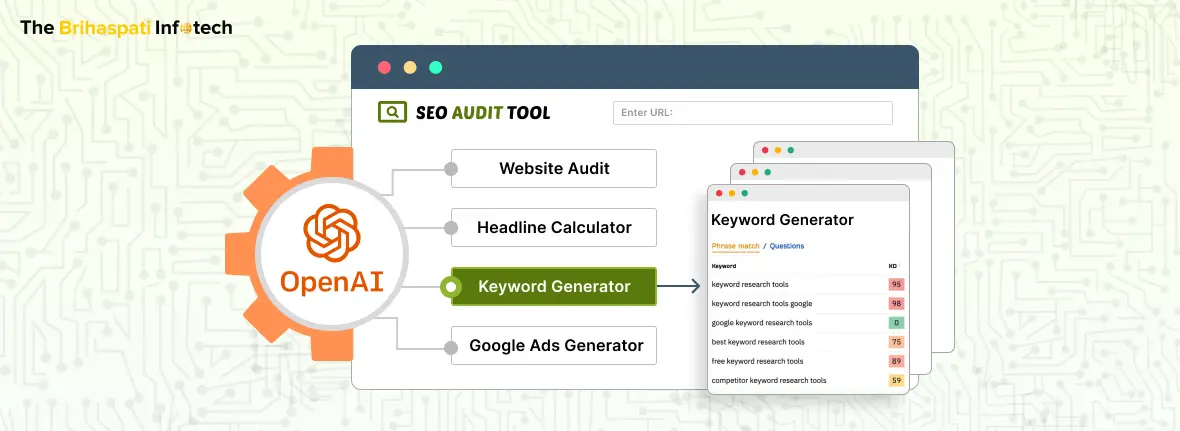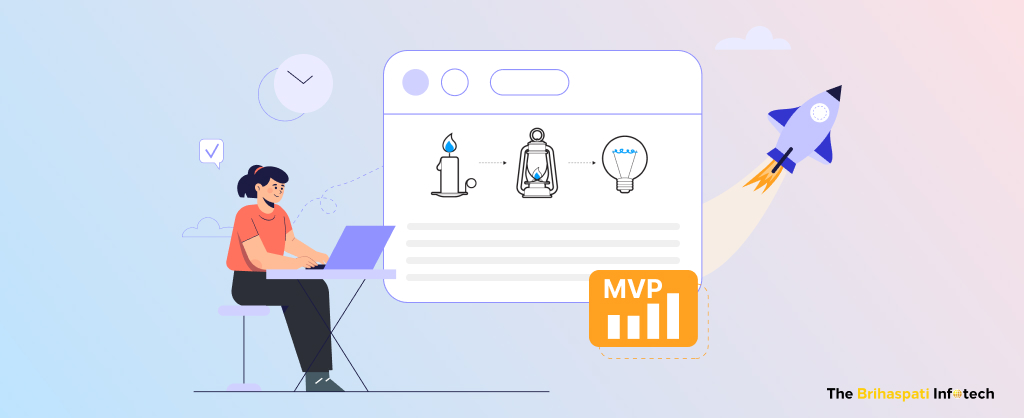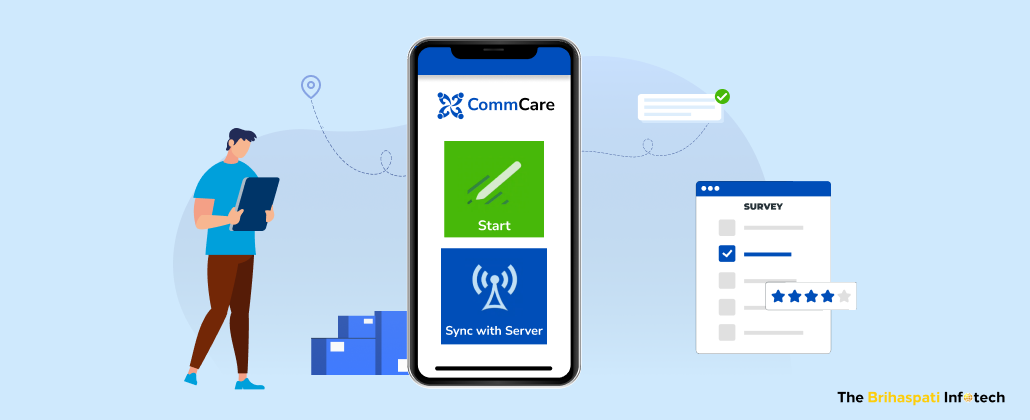The world is witnessing an unprecedented rise in artificial intelligence and machine learning in various industries. AI is a breakthrough element in the emerging digital era as organizations have already started investing in artificial intelligence and machine learning solutions like ChatGPT to surpass the competition, gain revenue and reduce operating costs.
“I imagine a world in which AI will make us work more productively, live longer, and have cleaner energy”. – Fei Fei Li, Director, Stanford’s AI Lab
After dominating the internet with Dall-E 2 image generator for the past few months, Open AI is in the headlines again for ChatGPT(AI-powered chatbot based on GPT-3.5). Though we are confident that you have not missed the buzz around ChatGPT, if somehow you did, let’s get introduced to one of the largest artificial neural networks ever created in human history.
What is Open AI’s ChatGPT?
ChatGPT is the latest large language model chatbot released by OpenAI. It is trained with a massive amount of data to generate human-like responses using conversational dialogue form. By using reinforcement learning with human feedback as an additional training layer, ChatGPT can follow specific directions to generate more satisfactory responses.
It is based on the revolutionary GPT 3.5 deep learning model that enables a better understanding of the queries. It also allows natural and jargon-free conversations between the users and the virtual assistant. ChatGPT is trained using vast swaths of text from the internet. However, delivering useful and better dialogue still takes further training from the human assistants.
Users can use the instant messaging feature of ChatGPT to probe the knowledge and data used to train the models. While we found it capable of answering questions, mimicking the rhythms of dialogues, and a lot more, the responses can differ from what you expect without engaging reinforcement learning with human feedback(RLHF).

Fine-Tuning NLP Models of ChatGPT for SEO
SEO is yet another area where GPT-3 and ChatGPT have a significant impact. Apart from creating high-quality content for websites/blogs, ChatGPT can help to boost search engine rankings and build robust AI-based SEO tools with machine learning algorithms.
Apart from that, you can also use SaaS development services to integrate it into your existing SEO tools for even more sophisticated content.
Advancements in AI technology are luring, thus more, and more SEO tools have started incorporating machine learning capabilities. At Brihaspati infotech, we recently worked on a project where the client wanted to upgrade his existing SEO analysis tools using OpenAI APIs.
Let’s explore what we achieved by fine-tuning the OpenAI models to accomplish the tasks of the SEO tool in question:-
1. Complete Website Analysis
Optimizing websites for appropriate search queries is one of the most challenging things for website owners. Failing to optimize your website can lead to difficult times showing up to rank for customer queries. The existing tool of the client was using custom algorithms for feedback on improving the results.
Therefore, to power this feature using AI, we need to fine-tune OpenAI’s GPT3 model with custom algorithms provided by the client. Once the fine-tuning was complete, we integrated those models to leverage ChatGPT for SEO tool to perform the following task with zero human assistance.
- Analyzing the content including meta tags, and scoring it on the basis of quality.
- Page Speed analysis with speed score on mobile and desktop.
- Listing the technical errors to improve the web page speed.
2. Headline Quality Calculator
Headlines play a crucial role in grabbing users’ attention, thus bringing significant conversions through blogs, articles, newsletters, and ads. We fine-tuned the GPT model with a large dataset of good, bad and average titles to power the headline quality calculator tool on the client’s website with AI.
We fine-tuned the ChatGPT model for headline classification and deployed it to perform the desired task. The AI-powered headline quality calculator can perform the following task with human-like accuracy:-
- Scoring headlines for SEO and PPC
- Scoring the headlines for email newsletters.
- Scoring the headlines for social media posts.
3. Google Ads Generator
After powering the above features with OpenAI, we need to try our hands on the Google Ads generation tool available on the client’s website. We enabled his Google ad generator with machine learning capabilities (GPT-3 from OpenAI) to generate headlines, and primary text and identify keywords using Open AI.
We also have plans to use the Unsplash API to enable this tool to search and select copyright-free images, thus developing it into a one-stop AI-powered solution for ad generation.
4. UTM Tags Generator
UTM Tags help in measuring the effectiveness of traffic channels and marketing campaigns. The client has a custom UTM tag generator tool on his website, therefore powering it with machine learning and AI was the next task accomplished by our team.
We adjusted the parameters of the pre-trained model of ChatGPT for SEO. We used OpenAI API for the generation of unique UTM tags for measuring the performance of calls of action, banners, and more.
5. Google Ads Keyword Modifier
If you use Google ads, you must be knowing the four keyword-matching options. The client was offering a tool executing a similar task, thus we were required to power it using OpenAI for keyword generation.
We tuned a GPT-3 Model using the documentation provided by the client to refine the broad match, broad match modifier, phrasal match, and exact match suggestion by his Google Ads keyword modifier tool.
6. Link Building Search Operators
Search operators play a crucial role in narrowing down the search results for specific queries. They are helpful in finding targeted websites for backlinking, locating specific content, and performing technical website analysis.
Link-building search operator tools are one of the widely used services on the client’s website, and we needed to deploy machine learning and AI to power the results it provides.
We fine-tuned the WebGPT, a research version of GPT-3 for creating a list of search operators for searching relevant web pages and promotional options. After deploying OpenAI, this tool was capable of generating search operators to search the following sources on Google, Yahoo, and Bing:-
- Sites, blogs, and pages accepting guest posts
- Directories for website listing
- Resource pages for link building
More GPT-3 and ChatGPT for SEO Use Cases
These were some of the AI-powered features we were able to get using the large learning models of OpenAI. However, it is not all that we can do to empower the SEO tools. There are far more use cases of OpenAI’s GPT-3 and ChatGPT for building SEO tools with robust capabilities. We have listed some of them for you below:-
- Search Intent Grouping Tools
- Describing the intent of the keywords
- Drafts of blog posts and full articles
- Analyzing keyword difficulty and search volume
- Competitor analysis tools for SEO
- AI-powered Plagiarism detection tools
Final Words
OpenAI’s ChatGPT undoubtedly holds a huge potential to impact the field of SEO by utilizing machine learning and NLP capabilities. Its impressive abilities make it a suitable option for creating chatbots and SEO tools powered by AI. Therefore, we advise you to go through the latest examples of GPT-3 use cases to better understand its capabilities.
Are you also looking forward to utilizing the potential of OpenAI ChatGPT and GPT-3? Let’s get in touch and discuss the potential role of natural language processing to shape the future of your business.
Stay Tuned for Latest Updates
Fill out the form to subscribe to our newsletter








